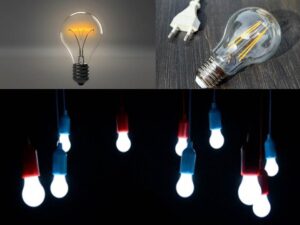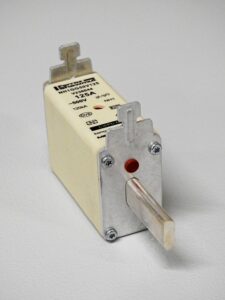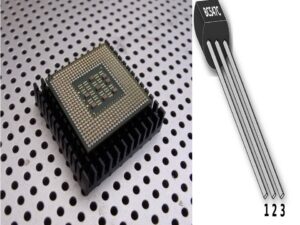ELECTRICAL APPLIANCES IN EVERYDAY LIFE
Summary of electrical appliances in every day life

Summary
Electrical appliance is one of the basic components of a circuit which makes use of electricity. we make use of electricity to take care of our needs There are electrical appliances which make our work easy and comfortable for examples electric bulb, iron box , heater, boiler, motor, fan, mixer, grinder, freezer, radio, T.V, cellphone, computer etc. Even though electricity is the most efficient, convenient eco – friendly and a handy form of energy, we cannot see it. Electricity can produce heat, light, magnetic field, movement and chemical change when it flows through its appliances. Heating effect, magnetic effect and chemical effect of electric current provides power for the house hold electrical appliances and industrial machinery.
Electrical appliances which work on heating effect of Electric Current.
A current carrying conductor having resistance get heated up. This phenomenon is called heating effect of electric current. The amount of heat produced depends on the strength of electricity passing through the conductor.
Electric Bulb

It glows because of heating effect of electric current. When electric current flows through the filament, the filament quickly heats up due to its high resistance and begins to glow. The brightness of the bulb depends on the amount of resistance. Resistance of the filament in turn depends on its material, length and thickness. This opposition for the flow of electric current is called resistance. electric bulbs glow due to heat produced in the filament, they are called incandescent lamps. They are not economical as they lose more of the electrical energy in the form of unwanted heat.
Electric fuse and its working

In house hold or industrial electric circuits conducting wire are of adequate capacity to carry designed strength of the electric current. Sometimes all of a sudden electric current increases to very high level because of excessive power supply or short circuits due to over load. The wires get melted due to overheat by heating effect of electric current, and even cause fire accidents, which can damage the electrical appliances.This danger can be prevented by using a Fuse
It is a safety device used for the purpose of protecting a circuit against excess current. It works on the heating effect of electric current. In the event of excess current, the fuse element melts and opens up the circuit there by protecting it from damage. A fuse wire is usually made by a Fig. 4.10 Fuse wire high resistant alloy of tin and lead, which can melt easily even when heated a little.
Different types of fuses are used for different purposes.
Electrical appliances use cartridge fuse. It has a fuse wire inside an evacuated glass tube so as to prevent catching fire. Miniature Circuit Breakers (M.C.B) are commonly used instead of fuse wires. Automatically it turns off, when ever there is excess current in the circuit. Later it can be turned on the thin fuse wire acts as a safety device to prevent over heating of the circuit due to excesss current.
Electrical appliances which work on Magnetic effect of electric current

A conducting wire behaves like a magnet when electric current flows through it. This is called magnetic effect of electric current.Example: Some of the house hold and commercial appliances like radio, fax machine, television, electric bell, telephone, tape recorder, audio-video tapes, computer discs and xerographic copier (xerox) works on the magnetic effect of electric current. Electromagnets are used in magnetic separation of iron ore and also in the separation of magnetic materials from the Junk.
Uses of Electromagnets

Electromagnets are used in electric motors which can run most of the house hold and industrial electrical appliances.Electric motor driven appliances are mixer, fan, hair dryer, vacuum cleaner, refrigerator, washing machine, grinder, dish washer, freezer, air cooler, electric vehicle, electric razor, electric agricultural equipment, harvesting machine, milling machine, water pump, drill, lathes, elevator, escalator, etc.
Applications of chemical effect of Electric Current
Due to chemical effect of electric current, some solutions undergo chemical change when an electric current flows through them. Electrolysis is one of the chemical effects of electric current. Electrolysis is the process by which a solution of a chemical compound conducts electric current and under goes a chemical change, when electric current passed through it. This process of depositing a layer of any desired metal on another material by means of electricity is called Electroplating .Electroplating is an application of chemical effect of electric current.
Electronic devices

Compact Fluorescent Lamp (CFL ) and Light Emitting Diodes (LED) are more economical compared to incandescent bulbs. Incandescent bulb wastes most of useful electrical energy in the form of unwanted heat, but modern electronic sources of light last longer and convert most of the electrical energy into required light energy with negligible wastage of electric current.
Now a days by the advent of modern science and technology, most of the heavy electrical appliances have been evolved into more compact and efficient electronic devices. Example : Personal computers, tablets and cell phones.
Semi Conductors

A semiconductor is a substance whose conductivity lies between that of a good conductor and an Insulator. The rate of flow of electrons is quite different in different materials, depending on whether they are conductors or insulators. Example: Silicon, germanium, selenium, gallium, arsenic, lead sulphate, etc. Silicon and Germanium are the most commonly used semiconductors. Semiconductors are the basic building blocks of electronic components.
Super Conductors
some substances for the flow of electric current becomes zero at a certain low temperature. Such substances are known as superconductors.ex: aluminum, niobium, magnesium diboride, cuprates such as yttrium barium copper oxide, and iron pnictides.




























